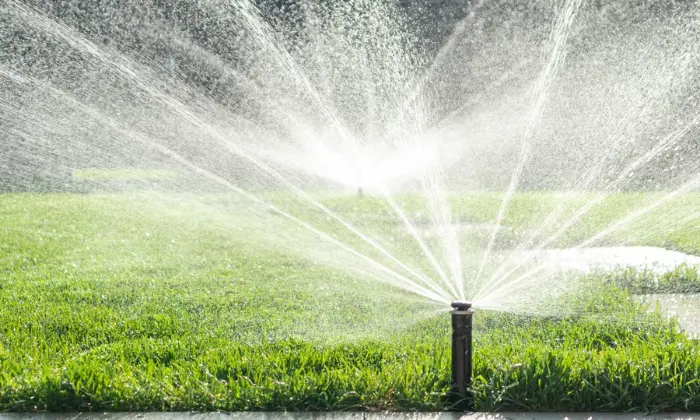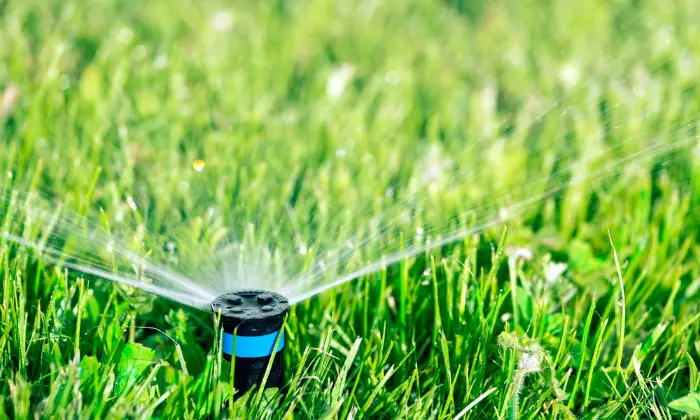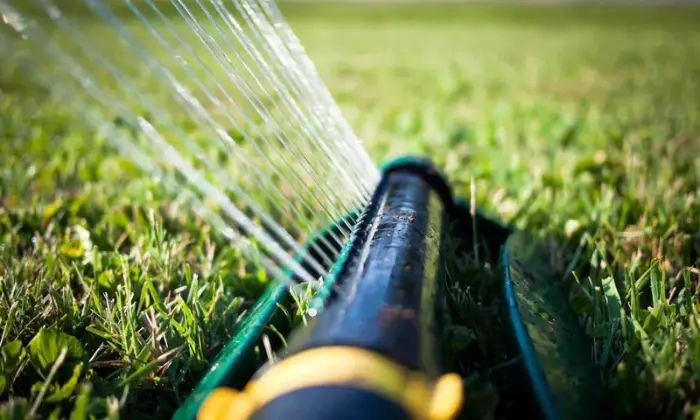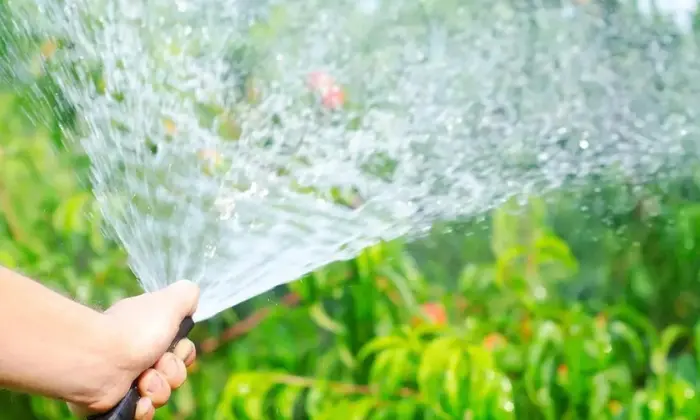Best time to water lawn and maintaining a lush, green lawn often involves more than just regular mowing. One crucial aspect of lawn care is watering, but knowing the best time to water your lawn can make a significant difference in its health and vitality. From conserving water to promoting root growth, timing is key. In this article, we’ll explore the optimal times to water your lawn, taking into account factors like climate, soil type, and grass species. By understanding when to water, you can nurture a thriving lawn while also being environmentally conscious. Let’s dive into the details.
When is the Best Time To Water Lawn

The best time to water your lawn care is typically in the early morning, ideally between 4 a.m. and 10 a.m. Watering during these hours minimizes water loss due to evaporation and wind, allowing the grass to absorb moisture more effectively. Additionally, morning watering helps prevent fungal diseases that thrive in damp conditions overnight. Avoid watering in the heat of the day, as this can lead to rapid evaporation and water waste. Watering in the evening is also not recommended, as the grass may remain wet overnight, increasing the risk of fungal growth.
Why Timing Matters In Lawn Watering

Timing is crucial in lawn watering for several reasons. Firstly, when i start watering my lawn at the right time ensures that the water pressure penetrates deeply into the soil, reaching the deep roots where it’s most needed for grass growth and health. Secondly, timing affects water per week efficiency; watering during cooler parts of the day minimizes evaporation, maximizing the amount of water pressure absorbed by the grass. Lastly, watering sessions at inappropriate times, such as during the heat of the day, can stress the grass and lead to issues like wilting or increased susceptibility to diseases.
Impact Of Watering At Different Times On Grass Health
The timing of watering can have a significant impact on grass health. Watering your lawn in the early morning is generally recommended because it allows the grass to absorb moisture before the sun’s intensity increases, reducing evaporation and ensuring the grass has access to water pressure throughout the day. Watering your lawn in the evening is also an option, but it can increase the risk of fungal diseases since the grass remains wet for a prolonged period. Overall, watering sessions at the right time promotes healthier grass growth and helps conserve water.
Best Time to Water Lawn in California

In California, the best time to water your lawn is typically early in the morning, before the sun gets too intense. This allows the water to soak into the soil without evaporating too quickly. Watering in the morning also helps to prevent the growth of fungi and diseases that thrive in damp conditions overnight. Avoid watering during the middle of the day. Additionally, watering in the evening can lead to prolonged moisture on the grass, increasing the risk of fungal diseases. So, aim for early mornings to keep your lawn healthy and vibrant.
Benefits Of Watering In The Morning
Early morning is widely considered the best time to water your lawn for several reasons, including:
Reduced Evaporation: Watering your lawn in the morning allows the moisture to penetrate the soil type before the sun’s intensity increases. This reduces the risk of water pressure loss through evaporation, ensuring that more conserved water reaches the deep roots of the grass.
Optimal Absorption: Cooler morning temperatures promote efficient water absorption by the grass roots. The grass can take up water pressure more effectively when it’s not stressed by heat, leading to better hydration and healthier growth.
Less Wind: Typically, winds are calmer in the morning, reducing the likelihood of water being blown away from the target area. This results in more precise watering and less wastage.
Reduced Risk of Disease: Watering in the morning allows the grass blades to dry quickly as the day progresses, minimizing the time they remain wet. This reduces the risk of fungal diseases, which thrive in moist conditions.
Supports Photosynthesis: Watering in the morning provides the grass with the moisture it needs to carry out photosynthesis throughout the day. This helps the grass produce energy and maintain its lush green appearance.
Overall, watering in the early morning offers multiple benefits for lawn health and water conserve efficiency, making it the preferred time for many homeowners and landscapers.
How Late Afternoon Watering Affects Grass

Late afternoon watering can affect grass health in several ways. Firstly, it provides hydration to the grass during the cooler evening hours, supporting its growth and resilience. However, the best time to water if the grass remains wet overnight, it increases the risk of fungal diseases such as dollar spot, brown patch, or powdery mildew. Additionally, late afternoon watering may not be as effective in hot and dry climates, as water conserve can evaporate more quickly during the day. Overall, while late afternoon watering can have benefits, it’s crucial to monitor moisture levels and avoid overwatering to maintain a healthy lawn.
Advantages And Disadvantages Of Watering In The Late Afternoon
Watering your lawn in the late afternoon or early evening comes with both advantages and disadvantages.
Advantages
- In the late afternoon, the temperatures are typically lower than during the peak of the day, reducing the risk of water loss through evaporation.
- Stop Watering lawn later allows the grass to absorb moisture before nighttime, providing hydration during the cooler evening hours when the grass can take it up more effectively.
- It can be more convenient for homeowners who may be busy during the morning hours.
Disadvantages
- Watering late in the day increases the risk of fungal diseases since the grass blades may remain wet overnight, creating a conducive environment for fungal growth.
- If water conserve sits on the grass overnight, it can attract pests like mosquitoes, which prefer damp areas to lay their eggs.
- In regions with high humidity, late afternoon watering may exacerbate fungal issues already present in the lawn.
When is the Best Time to Water Lawn in Hot Weather

Best time to water your lawn in hot weather can be challenging due to increased evaporation and higher water demands. The heat causes water to evaporate quickly from the soil, making it harder for the grass to stay hydrated. To effectively water your lawn during hot weather, try watering deeply but less frequently to encourage deep roots system growth and drought resistance. Water your lawn early in the morning or late in the evening to minimize water loss through evaporation. Consider using mulch to retain soil moisture and drip irrigation to deliver water directly to the roots. By adjusting your watering schedule and using water-efficient techniques, you can keep your lawn healthy and green even in hot weather while conserving water.
Importance Of Soil Moisture Monitoring During Hot Weather
Monitoring soil type moisture during hot weather is crucial for several reasons:
Plant Health: Hot weather increases the rate of evaporation, which can lead to soil drying out quickly. Soil type moisture monitoring helps ensure plants receive adequate water to sustain growth and prevent wilting. Insufficient moisture can stress plants, leading to reduced yields, stunted growth, and even plant death.
Water Conservation: Hot weather often coincides with periods of drought or water conserve scarcity. Monitoring soil moisture allows for efficient water management by avoiding overwatering or underwatering. This conservation of water resources is critical for sustainable agriculture and landscaping practices.
Optimized Irrigation: Soil type moisture data helps optimize irrigation schedules by providing real-time information on the moisture content of the soil. This prevents unnecessary watering and reduces the risk of waterlogging, which can suffocate plant roots and promote disease.
Preventing Soil Degradation: In hot weather, soil moisture levels can drop rapidly, leading to soil degradation such as compaction and erosion. Monitoring soil moisture allows for timely interventions such as mulching or adjusting irrigation practices to maintain soil structure and fertility.
Mitigating Climate Risks: Hot weather events are often associated with climate change and extreme weather patterns. Monitoring soil moisture helps farmers and land managers adapt to changing climatic conditions by providing early warnings of drought stress and enabling proactive measures to mitigate its impact on crops and ecosystems.
Challenges Of Watering During Hot Weather
Watering your lawn during hot weather poses several challenges due to increased evaporation rates and higher water requirements for the grass. Some of the main challenges include:
- Evaporation: Hot weather causes water to evaporate more rapidly from the soil surface, reducing the amount of water available for the grass roots.
- Water Stress: High temperatures can lead to increased water stress on the grass, causing it to wilt and turn brown if not adequately hydrated.
- Soil Drying: Hot weather can dry out the soil more quickly, making it harder for water per week to penetrate deeply into the root zone where it’s needed most.
- Increased Water Demand: During hot weather, grass typically requires more water to maintain its health and appearance, putting pressure on the irrigation system and water resources.
Consider Implementing Strategies To Water Your Lawn During Hot Weather
- Water Deeply and Infrequently: Instead of frequent shallow watering, water deeply and less frequently to encourage deep roots system growth and drought resistance.
- Water Early or Late: Water your lawn in the early morning or late evening to minimize water per week loss through evaporation and ensure the grass has access to moisture when it needs it most.
- Adjust Irrigation Schedule: Adjust your irrigation schedule based on weather conditions, increasing watering frequency during periods of extreme heat and drought.
- Use Mulch: Apply a layer of organic mulch around plants and in bare soil type areas to help retain soil moisture and reduce evaporation.
- Consider Drip Irrigation: Drip irrigation systems deliver water directly to the root zone of plants, minimizing water loss through evaporation and runoff.
- Monitor Soil Moisture: Use a soil moisture meter or perform regular visual inspections to monitor soil moisture levels and adjust watering accordingly.
- Choose Drought-Tolerant Plants: Consider replacing thirsty grass varieties with drought-tolerant alternatives that require less water to thrive in hot weather conditions.
By implementing these strategies, you can help your lawn stay healthy and green during hot weather while conserving water and minimizing water waste.
How Smart Irrigation System Can Optimize Watering

Smart irrigation systems optimize watering times through advanced technology such as weather data integration, soil moisture sensors, and zone-based irrigation. By analyzing real-time weather information, these systems adjust watering schedules to account for precipitation and environmental conditions, preventing overwatering. Smart irrigation system utilize advanced technology to optimize watering times in several ways:
Weather Data Integration
Smart irrigation systems can access real-time weather data from local sources or online services. By analyzing factors such as temperature, humidity, wind speed, and precipitation forecasts, the system can adjust watering schedules accordingly. For example, if rain is predicted, the system can delay or skip watering to prevent overwatering.
Soil Moisture Sensors
These sensors measure the moisture content of the soil and provide feedback to the irrigation system. By monitoring soil moisture levels, the system can determine when watering is necessary and adjust the duration and frequency accordingly. This prevents both underwatering and overwatering, ensuring that plants receive the right amount of water for optimal growth.
Plant Watering Needs
Smart irrigation systems can be programmed with information about the water requirements of different plant types. By taking into account factors such as plant species, age, size, and location, the system can tailor watering schedules to meet the specific needs of each plant. This ensures that all plants receive the appropriate amount of water, promoting healthy growth and minimizing water waste.
Zone-based Irrigation
Smart irrigation systems divide the landscape into zones based on factors such as soil type, sun exposure, and plant water requirements. Each zone can have its own customized watering schedule, allowing for precise control over irrigation. This ensures that water is distributed efficiently, with areas that require more water receiving it while areas that need less water are not overwatered.
Remote Control and Monitoring
Many smart irrigation systems offer remote control and monitoring capabilities via smartphone apps or web interfaces. This allows users to monitor watering schedules, adjust settings, and receive alerts from anywhere with an internet connection. With remote access, users can make real-time adjustments based on changing weather conditions or plant needs, ensuring optimal watering efficiency.
Conclusion
In conclusion, Emphasis on the role of Robert’s Complete Care in ensuring lawn health through proper watering practices: With Robert’s Complete Care, you have a trusted partner committed to the vitality of your lawn. Our expertise and dedication ensure that your lawn receives the right care at the right time, helping it thrive even in challenging conditions. For more information Contact Us today!


